 August 8, 2019 John E. Ross, KD8IDJ, Editor
| ||||||
Cape Cod ARES and SKYWARN Provide Support in Rare Cape Cod Tornado Event Cape Cod, Massachusetts, ARES, and SKYWARN Amateur Radio volunteers were promptly pressed into action as a storm system on July 23 produced severe thunderstorms that spawned three tornadoes over the Cape. Hurricane-force wind also resulted in significant tree Amateur Radio SKYWARN spotters were the first to provide critical ground truth information. Under the direction of Cape Cod District Emergency Coordinator Frank O'Laughlin, WQ1O, and Eastern Massachusetts SEC Rob Macedo, KD1CY, a SKYWARN net ran for several hours on a Barnstable VHF repeater, receiving numerous damage reports. Amateur Radio operations shifted to an ARES net supporting communication between a shelter at the Dennis-Yarmouth School and the Barnstable County Emergency Operations Center, which serves as the Multiagency Coordination Center (MACC).
ARES support for the Dennis-Yarmouth shelter as well as Amateur Radio operations at the Barnstable County MACC continued around "Traffic that was handled focused on the logistics of taking care of people who stayed in the shelter until power restoration efforts were near completion," O'Laughlin explained. A NWS-Norton survey team consisting of several meteorologists surveyed the damage and confirmed three tornadoes on Cape Cod in addition to destructive straight-line winds. Since tornado records have been kept, starting in 1950, only three tornadoes have been recorded on Cape Cod up until last year. -- Thanks to Rob Macedo, KD1CY Arizona ARES Volunteers Support Communication during Arizona Wildland Fire Members of the Coconino County Amateur Radio Club (CARC) in Arizona activated on July 21 as winds accelerated the Museum Fire beyond 50 acres, triggering the activation of the county's Emergency Operations Center (EOC). Members of the club, many of them ARES volunteers, staffed the EOC.
"The club has a great working relationship with Coconino County," said CARC's Public Information Officer Dan Shearer, N7YIQ. "CARC's ARES component has a dedicated position in the EOC structure and has assisted on many incidents over the last few years, providing communications to field personnel when cell and radio coverage is limited or nonexistent." Shearer said Amateur Radio equipment and antennas are stored at the EOC, and CARC members have been trained to set it up and have everything operational within an hour of activation. The fire, of undetermined origin, soon grew larger than 500 acres and became a top fire-fighting priority. A Type 1 incident management team took over management of the fire-fighting effort late on July 22, and more than 12 Hotshot crews (teams highly trained in all aspects of fire management), fire engines, water tenders, and aircraft were engaged in suppressing the blaze. Residents in some neighborhoods were ordered to evacuate, although no homes and structures were lost. There were fears that the fire might overrun communications sites on Mount Elden, which include public service, private, and Amateur Radio repeaters. "The loss of one or both of these complexes would have been catastrophic," Shearer said. CARC members were prepared for the risk and quickly assembled spare equipment, including extra radios and repeaters.
Air tankers dropped many loads of fire retardant around the repeater sites, and the exceptional work of the fire crews prevented the fire from running up the slopes to the complexes, Shearer said. A midweek change in the weather with substantial rain gave firefighters a chance to keep the blaze from crossing a fire line they constructed. ARES resources were released on July 26 and placed on standby as the fire risk was substantially reduced. Shearer said there is now a risk of flash flooding across the burned-over areas from the region's summer rainy period, and the City of Flagstaff and Coconino County are providing sandbags. "CARC personnel provided well over 250 hours in support of the Museum Fire in direct support of the joint EOC," Shearer said, adding that the EOC team and Arizona Governor Doug Ducey expressed their appreciation when the governor visited the fire operations. The Museum Fire grew to nearly 2,000 acres before it was brought under control. ARRL Member Had Role in Promising RF Treatment Device for Alzheimer's ARRL member Eric Knight, KB1EHE, played a role in the development of an RF-based Alzheimer's disease treatment that now shows great promise. A study published in the Journal of Alzheimer's Disease following a months-long FDA clinical trial of the treatment protocol concluded that memory decline in most patients "appeared to have been reversed to cognitive levels equivalent to 12 months earlier" after 2 months of treatment. The clinical trial concluded last December 31 and focused on the initial efficacy of what NeuroEM Therapeutics, Inc. -- the company developing the device -- calls "transcranial electromagnetic treatment" (TEMT), using a noninvasive head-worn device called the MemorEMâ¢.
"Results from the trial demonstrate that TEMT was safe in all eight participating patients with mild to moderate Alzheimer's disease, and enhanced cognitive performance in seven of them, as measured by standard cognition scales," said a news release from NeuroEM Therapeutics. Seven of the eight clinical trial patients agreed to take part in a 4-month extension study, based on the findings and the positive feedback from all participants. "This pioneering study suggests that TEMT may be an entirely new therapeutic intervention against Alzheimer's disease," said NeuroEM CEO Dr. Gary Arendash. "Our bioengineering technology may be succeeding where drug therapy against this devastating disease has thus far failed. TEMT appears to be affecting the Alzheimer's disease process through several actions directly inside neurons (brain cells), which is where we believe the disease process needs to be stopped and hopefully reversed." Arendash has explained that TEMT in the 900 MHz range breaks down the small protein aggregates (amyloid oligomers) in brain cells that are thought to initiate Alzheimer's development.
Knight, of Unionville, Connecticut, is the president of Remarkable Technolgies. He has no medical background, but several years ago, he learned of experiments that Arendash had carried out on mice specially bred to have Alzheimer's disease, in which the mice were exposed to low levels of RF for therapeutic purposes. The effects were dramatic, sometimes even reversing the disease's effects. Borrowing some concepts from earlier experiments with small rockets and avionics, Knight set about developing -- and later patenting -- a wearable device that could deliver requisite low levels of RF to a human head. NeuroEM was also developing a device, which it patented as well, and NeuroEM has filed multiple patents since then, Knight explained to ARRL. NeuroEM has an exclusive license to Knight's patent, and his contribution is now part of the overall mix of applied technology. "As an inventor and entrepreneur, all you can hope for is to have a positive impact on society, and this is about as important as it gets," Knight told ARRL. Read more. So Now What? Podcast "SATERN'S involvement in the hurricane season using Amateur Radio" will be the focus of the new (August 8) episode of the So Now What? podcast for Amateur Radio newcomers.
So Now What? is sponsored by LDG Electronics, a family owned and operated business with laboratories in southern Maryland that offers a wide array of antenna tuners and other Amateur Radio products. ARRL Communications Content Producer Michelle Patnode, W3MVP, and ARRL Station Manager Joe Carcia, NJ1Q, co-host the podcast. Presented as a lively conversation, with Patnode representing newer hams and Carcia the veteran operators, the podcast will explore questions that newer hams may have and the issues that keep participants from staying active in the hobby. Some episodes will feature guests to answer questions on specific topic areas. Listeners can find So Now What? on Apple iTunes, Blubrry, Stitcher (free registration required, or browse the site as a guest) and through the free Stitcher app for iOS, Kindle, or Android devices. Episodes will be archived on the ARRL website. AMSAT and ARISS Designing Amateur Radio System for Lunar Gateway Details are still being fleshed out, but AMSAT and ARISS are working on the design of an Amateur Radio system for NASA's Lunar Gateway. As NASA explains, the Gateway "will be a small spaceship in orbit around the moon that will provide access to more of the lunar surface than ever before with living quarters for astronauts, a lab for science and research, ports for visiting spacecraft, and more." For NASA, the Lunar Gateway is "a spaceport for human and robotic exploration to the moon and beyond." For radio amateurs, the Lunar Gateway will "To make this happen, we are leveraging the work and expertise of the worldwide AMSAT organizations and the international ARISS community," ARISS-International Chair and AMSAT Vice President for Human Spaceflight Programs Frank Bauer, KA3HDO, said. "We have an international team working on this and are meeting twice a month to mature the concept." The ARISS concept was presented to NASA in May and got positive feedback, and was favorably received a few weeks later at the ARISS-International meeting in Montreal from the Canadian Space Agency's Gateway Program Manager. "The Amateur Radio Exploration (AREx) team has done some really good work," Bauer continued. "The challenge for amateurs will be on the order of a 30 dB signal path loss as compared to LEO." The Lunar Gateway will serve as a solar-powered communication hub, science lab, short-term habitation module, and a holding area for rovers and other robots that may be bound for the moon or for other "We need to develop a block diagram of a system and subsystems and find team members who want to work on each," Bauer said when the ARISS-International team met in Montreal. "We must set up requirements and interface documentation. We need to solidify the frequencies to use, working with the International Space Frequency Coordination Group." ARISS ARRL Representative Rosalie White, K1STO, said that ARISS is working to spread the word about the new initiative. She also hopes the new project may inspire the generosity of the Amateur Radio community. Read more. The K7RA Solar Update Tad Cook, K7RA, Seattle, reports: A new sunspot group from Cycle 24 appeared only briefly, August 7 - 8. Sunspot numbers on Monday and Tuesday were 11 and 12. The average daily solar flux shifted slightly from last week, from 67 to 67.2. The average planetary A index, an aggregate geomagnetic indicator, more than doubled, from 5 to 10.3, due to solar wind that raised the planetary A index to 35 on Monday. Alaska's high-latitude college A index reached 61 on Monday and 24 on Tuesday.
Predicted planetary A index is 5 on August 8 - 9; 6 and 8 on August 10 - 11; 5 on August 12 - 16; 8 on August 17 - 18; 5 on August 19 - 25; 8 on August 26 - 28; 5 on August 29 - 30; 12, 25, 25, 16, and 8 on August 31 - September 4; 5, 8, and 8 on September 5 - 7; 5 on September 8 - 12; 8 on September 13 - 14, and 5 on September 15 - 22. Sunspot numbers for August 1 - 7 were 0, 0, 0, 0, 12, 11, and 0, with a mean of 3.3. The 10.7-centimeter flux was 66.8, 66.9, 65.7, 66.9, 68.1, 68.1, and 68, with a mean of 67.2. Estimated planetary A indices were 8, 4, 3, 4, 35, 12, and 6 with a mean of 10.3. The middle latitude A index was 8, 4, 4, 6, 20, 10, and 6, with a mean of 8.3. A comprehensive K7RA Solar Update is posted Fridays on the ARRL website. For more information concerning radio propagation, visit the ARRL Technical Information Service, read "What the Numbers Mean...," and check out K9LA's Propagation Page. A propagation bulletin archive is available. Monthly charts offer propagation projections between the US and a dozen DX locations. Share your reports and observations. Just Ahead in Radiosport
See the ARRL Contest Calendar for more information. For in-depth reporting on Amateur Radio contesting, subscribe to The ARRL Contest Update via your ARRL member profile email preferences. Global Institutions Support Amateur Radio Communication and Experimentation Former ARRL CEO David Sumner, K1ZZ, has contributed to the latest edition of ITU News Magazine -- published by the International Telecommunication Union. The issue is devoted to "terrestrial wireless communications," which includes the Amateur Radio and Amateur Satellite services. Sumner's article, "Self-training, intercommunication and technical investigations: the amateur service in the 21st Century," discusses Amateur Radio within the context of a global network of experimenters and communicators who, in Sumner's words, "expand "Amateur licensees are grateful that ITU member-states continue to recognize the benefits of providing direct access to the radio spectrum to qualified individuals," said Sumner, who now serves as secretary of the International Amateur Radio Union (IARU), an ITU sector member. Sumner points out that access to frequency bands "spaced throughout the radio spectrum" is critical to Amateur Radio's future. He notes that the initial pattern of ham allocations dates back to 1927 and the International Radiotelegraph Conference. Allocations have been expanded at subsequent conferences, most recently at World Radiocomunication Conference 2015 (WRC-15), when ham radio obtained a tiny secondary band near 5.3 MHz. (An earlier WRC was responsible for the Amateur Service's two lowest-frequency allocations, 135.7 - 137.8 kHz and 472 - 479 kHz.) The 1979 World Administrative Radio Conference (WARC) extended terrestrial allocations above 40 GHz to include amateur allocations. "If a future World Radiocommunication Conference extends allocations above 275 GHz, adequate provisions for amateur experimentation should be made," Sumner observed. The first item on the agenda for WRC-19, which takes place this fall in Egypt, calls on delegates to consider an allocation at 50 MHz to the Amateur Service in ITU Region 1 (Europe, Africa, and the Middle East) that aligns with existing allocations in Regions 2 and 3.
Sumner notes that ITU "plays an essential role" in keeping the spectrum clear of unwanted interference and emissions, an effort he said is "especially vital to the Amateur Service, which uses sensitive receivers to compensate for practical and regulatory limitations on antennas and transmitter power levels." Sumner also pointed to the role radio amateurs can play in developing and refining communication protocols, including digital techniques, to improve weak-signal performance. He noted that Joseph Taylor, K1JT -- a codeveloper of such digital modes as FT8, FT4, and JT65 -- received an ITU Gold Medal in recognition of his outstanding contributions to radiocommunication. As Sumner explained, the IARU -- a federation of more than 140 member-societies --represents the interests of radio amateurs around the world before ITU. IARU's contribution to the work of ITU began in 1932 with its admission to participate in the work of the International Radiocommmunicaiton Consultative Committee (CCIR). IARU is a member of the ITU Radiocommunication and Development sectors. "The IARU is proud to be an active member of the ITU community," Sumner said. Centenarian Mentor and Multiple Award Recipient "Fritz" Nitsch, W4NTO, SK ARRL Life Member and honoree Reynold L. "Fritz" Nitsch, W4NTO, of Spartanburg, South Carolina, died on August 5 following a brief illness. He turned 100 on July 21. Nitsch was the first recipient of the ARRL Board of Directors' Centurion Award in recognition of his centenarian status and of his almost half-century of continuous activity in the ARRL Field Organization as an Official Observer, an Official Emergency Station, A decorated World War II veteran, Nitsch served as a radio station engineer for about a decade after the war before going to work for the Federal Aviation Administration, where he remained until retirement. He was a charter member of the Spartanburg Amateur Radio Club, founded in 1952. Affectionately known as the "Godfather of Hams in Spartanburg County," Nitsch was known to have tutored and mentored many radio amateurs in the region. Nitsch had taught Morse code while in the Army and was an avid CW operator. Other awards and recognitions he received over the years include the Clara Barton Award for Meritorious Volunteer Service, recognizing his more than 30 years of service to the local American Red Cross chapter assisting in disaster responses. In Brief...
Getting It Right! Regarding the article, "One Dead, One Injured in New Hampshire Ham Radio Tower Mishap," which appeared in the August 1 edition of The ARRL Letter, Audra Wilder, KD3K, the niece of the Michael Rancourt, K1EEE, the owner of the collapsed tower who was seriously injured in the mishap, wishes to amend some aspects of our report. According to Wilder, (1) Rancourt had already sold his house; (2) the tower involved was a 40-footer and not a tilt-over design; (3) the gathering at the house was a work party, with four people on the ground and two on the tower, and Rancourt's wife looking on; (4) when Wilder was visiting Rancourt's for Field Day, no visible wear on the tower was obvious, and (5) Rancourt had climbed the tower 24 hours prior to its collapse. Upcoming ARRL Section, State, and Division Conventions
Find conventions and hamfests in your area.
. .
Subscribe to...
Free of charge to ARRL members...
| ||||||
.jpg) and utility wire damage across Cape Cod. Some pockets of wind damage also occurred in the northwest corner of Martha's Vineyard.
and utility wire damage across Cape Cod. Some pockets of wind damage also occurred in the northwest corner of Martha's Vineyard.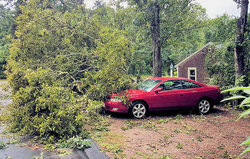 "Dozens of reports of trees and wires down and some structural damage reports were received during the SKYWARN net, and Amateur Radio operators supported initial damage assessment in the hardest hit areas and provided photos and videos that were shared via social media and other outlets," Macedo said. "This provided critical situational awareness and disaster information to the National Weather Service (NWS), state emergency management, and local media outlets, and helped to diagnose the areas for NWS meteorologists to survey to determine whether a tornado or straight-line wind damage occurred."
"Dozens of reports of trees and wires down and some structural damage reports were received during the SKYWARN net, and Amateur Radio operators supported initial damage assessment in the hardest hit areas and provided photos and videos that were shared via social media and other outlets," Macedo said. "This provided critical situational awareness and disaster information to the National Weather Service (NWS), state emergency management, and local media outlets, and helped to diagnose the areas for NWS meteorologists to survey to determine whether a tornado or straight-line wind damage occurred."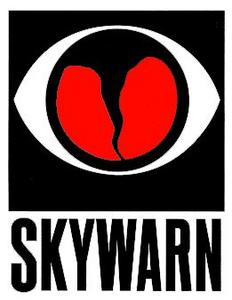 the clock, with six radio amateurs engaged in shelter and EOC communications over the course of about 2 days. The severe weather knocked out power for some 53,000 customers on Cape Cod, and it took utilities several days to repair the damage and restore service.
the clock, with six radio amateurs engaged in shelter and EOC communications over the course of about 2 days. The severe weather knocked out power for some 53,000 customers on Cape Cod, and it took utilities several days to repair the damage and restore service.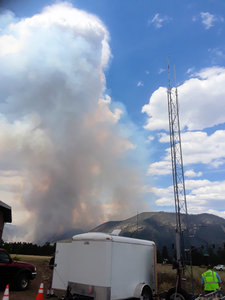
.jpg)
.jpg)
.jpg)
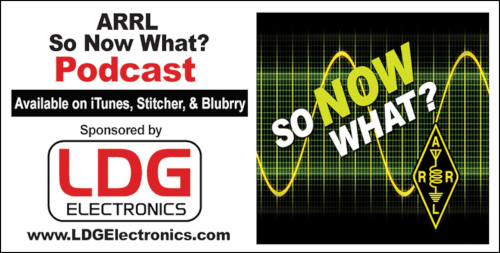 If you're a newly licensed Amateur Radio operator, chances are you have lots of questions. This biweekly podcast has answers! So Now What? offers insights from those who've been just where you are now. New episodes will be posted every other Thursday, alternating new-episode weeks with the
If you're a newly licensed Amateur Radio operator, chances are you have lots of questions. This biweekly podcast has answers! So Now What? offers insights from those who've been just where you are now. New episodes will be posted every other Thursday, alternating new-episode weeks with the 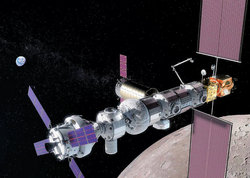 represent the next step in moving ham radio away from low-Earth orbit and into deep space. Under the current
represent the next step in moving ham radio away from low-Earth orbit and into deep space. Under the current 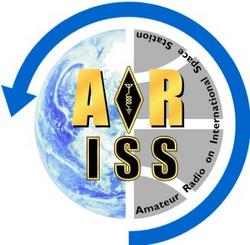 planets. NASA is leading the project in collaboration with commercial and international partners, including all of the International Space Station partners.
planets. NASA is leading the project in collaboration with commercial and international partners, including all of the International Space Station partners.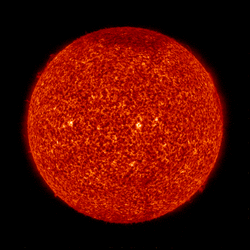 Predicted solar flux is 68 on August 8 - 12, and 67 on August 13 - September 21.
Predicted solar flux is 68 on August 8 - 12, and 67 on August 13 - September 21..JPG) the body of human knowledge and technical skills that are essential to development and offer a resource that can literally save lives when natural disasters disrupt normal communications channels."
the body of human knowledge and technical skills that are essential to development and offer a resource that can literally save lives when natural disasters disrupt normal communications channels.".jpg)
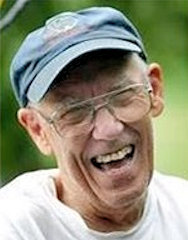 and an Official Relay Station. Nitsch received the ARRL George Hart Distinguished Service Award in 2012, and was an earlier recipient of the Roanoke Division Service Award (the Vic Clark, W4KFC, Award) for his contributions to the public through Amateur Radio.
and an Official Relay Station. Nitsch received the ARRL George Hart Distinguished Service Award in 2012, and was an earlier recipient of the Roanoke Division Service Award (the Vic Clark, W4KFC, Award) for his contributions to the public through Amateur Radio..jpeg) An APRS Amateur Radio balloon, call sign NA1WJ-5,
An APRS Amateur Radio balloon, call sign NA1WJ-5, 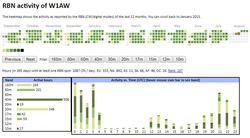 A new web tool can tell how active you have been over the past 12 months. Plug your call sign into
A new web tool can tell how active you have been over the past 12 months. Plug your call sign into 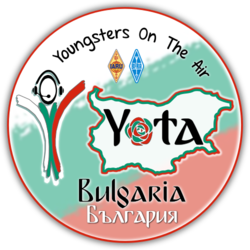 The 9th YOTA Summer Camp Gets Under Way on August 11.Up to 80 young radio amateurs, primarily from IARU Region 1 but including participants from other parts of the world, will gather in Bulgaria for the 9th annual Youngsters on the Air (
The 9th YOTA Summer Camp Gets Under Way on August 11.Up to 80 young radio amateurs, primarily from IARU Region 1 but including participants from other parts of the world, will gather in Bulgaria for the 9th annual Youngsters on the Air (







